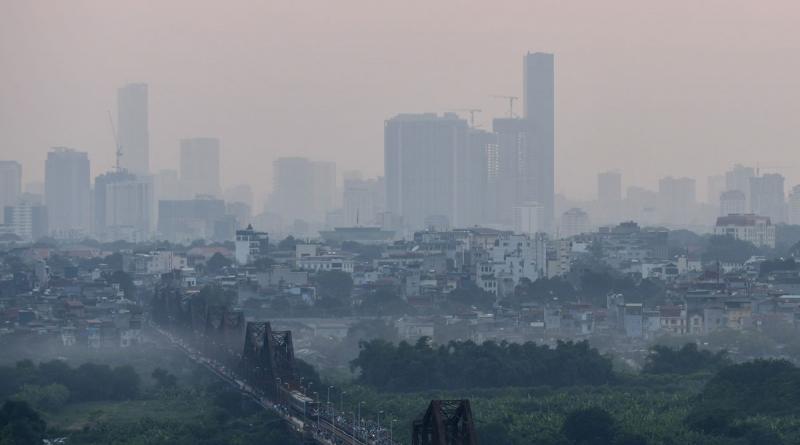Coal's Sell-By Date Just Moved Closer.

Vietnam, a key customer in the critical Southeast Asian market, is turning away from the fossil fuel.
Hanoi is smudging coal’s prospects.
Battered in green-minded Europe, thermal coal producers have been leaning instead on appetite from fast-expanding emerging economies, particularly in Southeast Asia. A change of direction in Vietnam suggests that support may be fading.
An energy strategy for the decade through 2030, outlined last month, reduces the role of the dirtiest fossil fuel in favor of wind, solar and gas. That’s a huge step for a country of nearly 100 million that’s growing at 6% to 7% annually, and anticipating a power shortage starting 2021 — not to mention one that until recently had planned to roughly triple its fleet of coal-fired power plants. Vietnam forecasts power demand will more than double in the coming decade.
The change of heart reflects a financing squeeze, cheap gas and U.S. pressure on Vietnam to reduce the trade surplus with its largest export market. Combine that with decreasing costs for renewable energy, and growing domestic concerns about air pollution. Then add in the fact that, in the short term, the urgency for extra power may cool as the country gets over the direct and indirect impact of the coronavirus on manufacturing investment. Coal’s sell-by date just moved a lot closer.
It’s hard to overstate Asia’s role in coal. The region has, alone, kept the single-largest contributor to greenhouse gas emissions from falling off a cliff. Its extra consumption has helped global coal demand grow marginally in recent years, despite sharp drops in demand in the U.S. and Europe. The region now accounts for almost 80% of global coal power generation, and most of that boost has come from Southeast Asia, led by Vietnam and Indonesia. Vietnamese coal imports almost doubled in 2019.
Hanoi isn’t turning away altogether from the fuel that provides about 40% of its electricity. Its national energy development plan backs large-capacity and high-efficiency units, plus so-called ultra-supercritical technology, which is less polluting. Yet it advises spending is targeted elsewhere, including on the grid, on gas and on renewable energy. The National Steering Committee for Power Development has recommended scaling down coal’s share in power generation to 37% by 2025 from half. That eliminates 15 gigawatts of planned projects — significant for a country with about 20 GW of installed coal capacity.
The final update to the power development plan isn’t due for a few months, but these signals should already be ringing alarm bells for miners.
Consider that it comes alongside increasing financial strain for the coal-fired power sector, under pressure even before recent market ructions. Even the likes of Mitsubishi UFJ Financial Group Inc., Mizuho Financial Group Inc. and Sumitomo Mitsui Financial Group Inc. are slowly edging away from the fuel, along with international peers. According to BloombergNEF, out of more than 41 GW of private-sector projects in Indonesia and Vietnam, roughly half had yet to achieve financial closure as of the end of last year. Some will probably fall by the wayside.
Asia still has state backers such as Export-Import Bank of Korea — a heavyweight thanks to the outsize role South Korea plays in Vietnamese foreign direct investment — plus Chinese institutions like Export-Import Bank of China. That support may be cooling too, though, with Japan considering stepping away from its role financing coal-fired plants abroad.
Meanwhile, Washington is pressuring Hanoi to close a trade gap that widened to $47 billion last year, according to Vietnamese data, by buying more cheap gas. Regional governments have been among those pressing for permission to swap out coal for gas. Absent a substantial increase in gas prices, that trend will accelerate.
Besides other incentives to change, coal also threatens Vietnam’s energy security: The country has been a net importer since 2015, and could have to bring in 100 million metric tons a year to keep the lights on if it expands as planned through 2030.
None of this spells an abrupt end for coal. Vietnam and Indonesia can still provide guarantees that reduce risk for investors, or long-term purchase deals. China and India may push green concerns to the back as they scramble to keep economies moving.
Yet circumstances in this corner of Southeast Asia have swiftly conspired against a dying fuel. If even Politburo members can turn from tripling plants to considering carbon taxes, there’s no reason others won’t follow.
This column does not necessarily reflect the opinion of Bloomberg LP and its owners.
To contact the author of this story:
Clara Ferreira Marques at cferreirama@bloomberg.net
To contact the editor responsible for this story:
Matthew Brooker at mbrooker1@bloomberg.net
12 March 2020
Bloomberg Opinion




